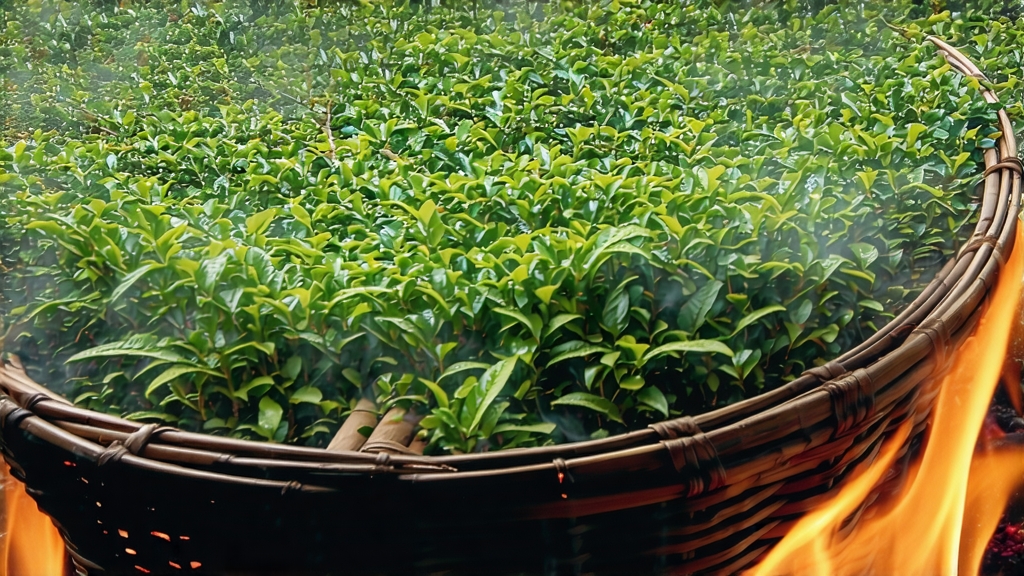
Long before Assam, Ceylon, or even Keemun entered the lexicon of tea drinkers, there was Lapsang Souchong. Born in the rugged Wuyi Mountains of northern Fujian, this is the tea that taught the world what “black tea” could taste like. Locals still call it zhengshan xiaozhong—“small-leaf from the original mountain”—a name that quietly insists on terroir and tradition. International tongues, however, know it by the phonetic twist that sailed across 17th-century trade routes: Lapsang Souchong.
1. Historical embers
The story begins around 1568, late Ming dynasty, when an army unit bivouacked among Tongmu village tea factories. To dry the leaves quickly for the traveling merchants, workers spread them over fresh pinewood fires. The smoke penetrated the leaf, turning what should have been a green tea into something dark, glossy, and hauntingly aromatic. The Dutch bought it anyway, Europe adored it, and a new category—hong cha, “red tea”—was born. By the early 1600s Lapsang Souchong was ballast in East India ships, priced higher than silver in London coffeehouses. Samuel Pepys wrote of sipping “a China drink called ‘tay’ of a smoky taste,” and Catherine of Braganza used it to court the English court. Thus the first black tea became the prototype for every malty Assam and bright Ceylon that followed.
2. Terroir and leaf style
Authentic Lapsang comes only from the 600–1,200 m core zone of Tongmu Nature Reserve, a UNESCO mixed heritage site where subtropical evergreens drip moisture onto granite cliffs. The canyon fog slows photosynthesis, concentrating amino acids and volatiles in the small-leaf Camellia sinensis var. bohea. Two cultivars dominate: xiaozhong (compact shrub) and wild caicha (long, slender leaf). Only spring buds plus the first two leaves are plucked, ensuring a balance of polyphenols and monoterpenes that can stand up to smoke without collapsing into acridity.
3. Craft: where fire meets flesh
The traditional 12-step process has changed little in 450 years.
- Withering: Bamboo mats are laid above pinewood embers in a half-subterranean room. Infrared heat (45 °C) deactivates leaf enzymes while resinous smoke begins its courtship.
- Rolling: Once the leaf is velvet-pliable, craftsmen roll it on rattan trays until cell rupture reaches 70 %—enough to release catechins but preserve aromatic oils.
- Fermentation: In cedar-lined boxes the leaf oxidizes for 2.5–3 h at 28 °C and 85 % humidity, turning from jade to copper.
- Smoke-drying: The critical act. Fresh resin-rich Masson pine is burned below iron mesh; leaves are spread 1.5 cm thick and turned every 15 min for 8–10 h. The goal is not carbonization but absorption of α-pinene and longifolene, molecules that later translate into candied bacon and dried longan notes.
- Sorting: Tea is passed through bamboo sieves; only tight, jet-black twists with golden tips qualify for top-grade Zhengshan.
A newer, “unsmoked” style (wuyi xiaozhong) exists, dried with hot air rather than pine. It offers cocoa and honey character, yet purists argue it forfeits the soul of the tea.
4. Grades and market names
- Zhengshan Lapsang: Core Tongmu, pine-smoked, wine-bright liquor, tarry sweetness.
- Wuyi Lapsang: Neighboring valleys, lighter smoke, raisin aroma.
- Lapsang Souchong OP: Larger leaf, malt-forward, designed for Russian samovars.
- Lapsang Ninghong: A hybrid with Jiangxi Ning red, showing rose and camphor.
5. Brewing: taming the campfire
Western cup: 2.5 g per 250 ml, 95 °C water, 3 min. Expect a clear amber liquor and a scent reminiscent of pine honey on grilled stone fruit.
Gongfu ceremony (recommended):
- Vessel: 120 ml zisha or porcelain